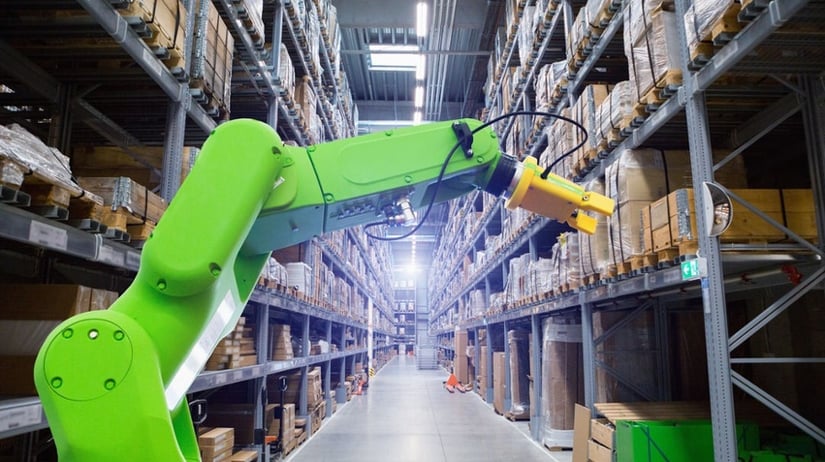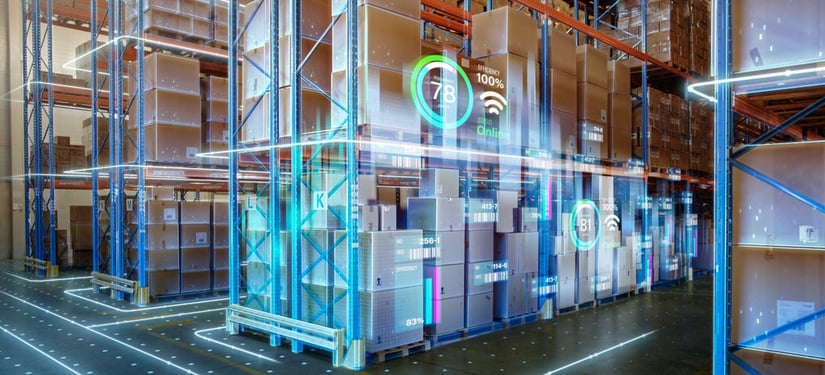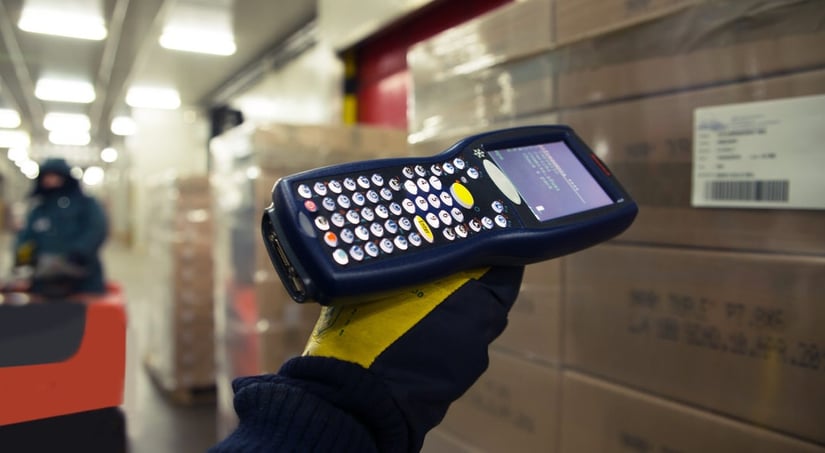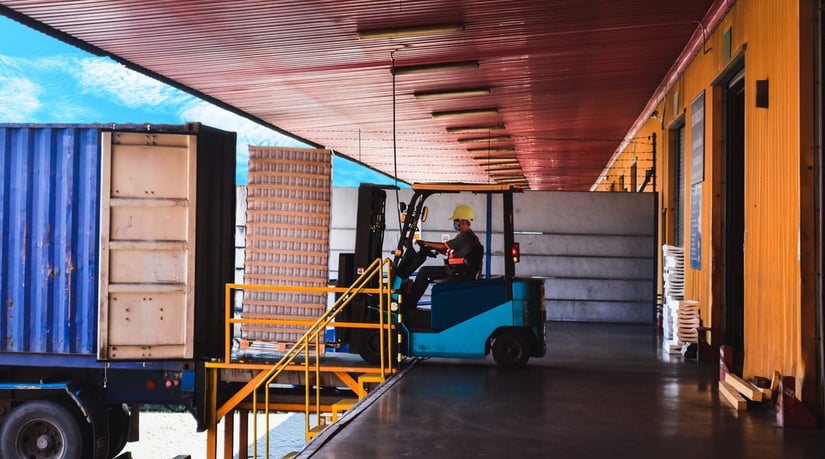Warehouse Automation Guide
From wide-range adoption in the 80s and high capacity systems in the 90s to the ubiquity of automated robotics in the modern age, warehouse automation has taken huge strides over the past few decades.
DSD distributors, operations leaders, and founders should be making the most of warehouse automation benefits to streamline their processes, maximize ROI, and stay competitive. Below we’ll cover what you need to know about warehouse automation growth, benefits, solutions, and more.

What is warehouse automation?
In 1966 the first Rackbuil System was developed for a Japanese electric motor company, which helped enable storage and retrieval systems. Since then, warehouse automation has widely expanded. Warehouse automation refers to the technologies and software associated with automating the storage and movement of inventory as it enters and leaves warehouses.
It can refer to physical robot systems that move inventory for humans or the software that manages a lot of the system-related manual processes. There are a lot of benefits to warehouse automation, which we’ll look at below.
Benefits of warehouse automation
Warehouse automation benefits are about more than just saving costs. Automotive technologies help warehouses become more efficient, less prone to human error, and more profitable. Some of those benefits include:
- Higher warehouse throughput.
- Increased safety.
- Fewer mistakes.
- Increased customer satisfaction.
- Better labor management by delegating manual tasks to robots and people toward warehouse operations.
- Better use of resources.
- Reduced labor and operational costs.
- Better data/information management between retail partners.
- Warehouse automation helps meet the challenges of e-commerce and time-sensitive orders.
These are just a few of the main benefits that make warehouse automation essential in the contemporary distribution era.
Warehouse automation statistics
What do these benefits look like by the numbers? The below warehouse automation statistics will demonstrate the efficacy, benefits, and necessity of warehouse automation.
- According to a Liberty Mutual Group study, the warehousing and transportation industry pay $84 million in serious, non-fatal injury costs per week in the USA alone.
- A study from Westernacher found that the average order picker can make around 70 picks per hour, compared to conveyors and sorters, which can do up to 300 picks per hour.
- That same Westernacher study found that because of the advent of e-commerce deliveries, 46 percent of warehouses handle a combination of full palettes, split cases, and even single-united shipments. You’ll need automated software services in order to manage these kinds of orders.
- The three biggest concerns for operational leaders in this Distribution Center survey were outdated storage and packing systems, inadequate information systems, and the inability to attract qualified candidates.
- A GS1 US Standard Use survey shows that retail inventory is accurate only 63 percent of the time.
- You can reduce picking errors by up to 67 percent with warehouse automation.
 Warehouse automation ROI
Warehouse automation ROI
While warehouse automation does have some sizable entry costs, the long-term ROI is well worth the value.
When you can pick cases faster, safer, and more accurately, you get more shipments going in and out of your warehouse at higher rates. You can also reduce injuries on the job, which can be costly when you consider salaries of temporary workers, legal fees, unreimbursed medical payments, treatment for chronic pain, and other indirect costs.
You’ll also have an edge over your competitors. If you can fulfill split cases orders and single-unit shipments, you can open yourself to e-commerce shipments and expand your customer base.
Improvements in the customer experience, increased productivity, better data aggregation, and improvements in overall warehouse efficiency will all contribute to a significant ROI for long-term growth.
Warehouse automation growth and market size
Warehouse automation, especially over just the past five years, has seen tremendous growth that doesn’t look like it’s going to slow down anytime soon. For example, more than 55,000 AMRs were sold in 2020–three times the amount from 2018.
The warehouse automation market is set to double between now and 2030, from $20 billion to more than $40-50 billion worldwide.
The question isn’t whether or not warehouse automation will become the industry standard–it’s when. And for a lot of the industry, it already is.

Warehouse automation examples
So what does warehouse automation actually look like? Below we’ll look at a few automation warehouse examples that are most prevalent in today’s market.
- Automated storage and retrieval systems
- These systems are what most people think of when they hear the words warehouse automation. AS/RS is a GTS technology that helps to move and store items throughout a warehouse.
- Picking systems
- Picking systems, also known as pick-to-light systems, help workers locate items to fulfill orders. They use barcodes or LED lighting to help workers find items quicker and more accurately.
- Automobile mobile robots (AMR)
- AMR technology is faster, more efficient, and more intelligent than traditional automated guided vehicles. AMR vehicles can manage flexible sorting, goods-to-person needs, zone picking, order picking, and more.
- Data warehouse automation tools
- These tools help improve data quality and precision when it comes to reporting, analysis, and data aggregation. These systems help keep your data more secure, notify you of any errors in your pipeline more, has quicker and better reporting, and help you prepare for upcoming changes you might be facing.
- Automated shipping
- Warehouse automation helps increase turnaround time, volume, and frequency of shipments and orders, which means eventually most warehouses need an automated shipping system. These systems make it easier to track, schedule, and manage deliveries from start to finish.
 Final thoughts: Automation guide beyond the warehouse
Final thoughts: Automation guide beyond the warehouse
As you consider the level of automation in your warehouse, also think about how it extends into the sales and field distribution operations in your process. For DSD, route/field sales, and e-commerce, it’s going to get increasingly difficult to track your various levels of distribution. That’s where an end-to-end route accounting software, like Prism, can transform your warehouse automation strategy.
Prism can help you streamline all of your distribution with an all-in-one desktop, web, and mobile platform that your drivers and field services representatives can take with them on the road.
You can track and manage orders, enable your drivers to collect signatures and payments on the road, and increase your sales force.
Learn more about how you can manage inventory, control routes, and increase sales with Prism today.
In this free report template, you'll be able to quickly manage monthly inventory, distribution, and other KPIs.
Topics from this blog: Direct Store Delivery DSD Warehouse
Back
